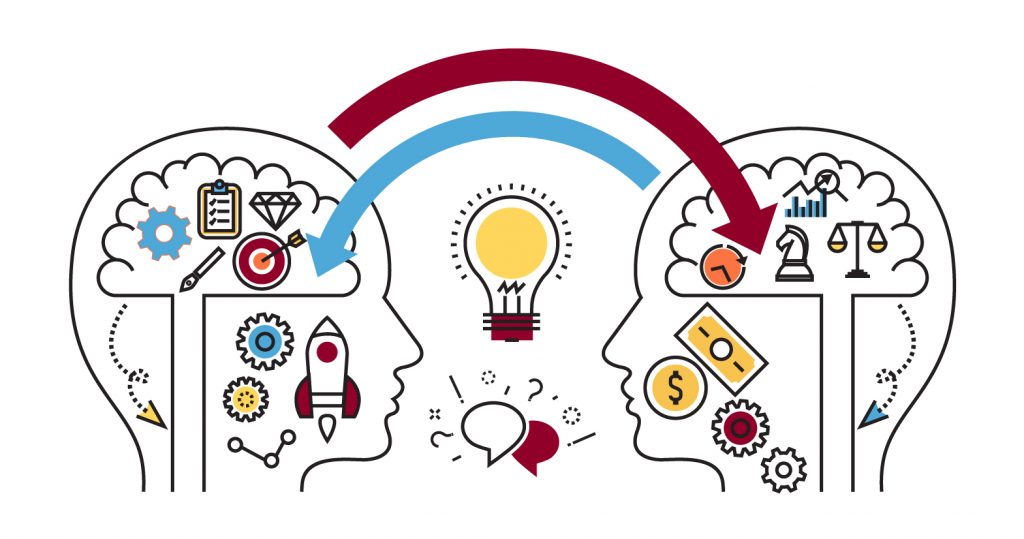 By Stephen Wilson
By Stephen Wilson
The Experts
 Amy Guisinger
Amy Guisinger
Assistant Professor of Economics
 Chris Ruebeck
Chris Ruebeck
Associate Professor of Economics
Sears Holdings Corp. announced the closure of 28 Kmart stores including one near the college. This retail trend is not new. Many other retailers are closing locations and making deep cuts, like Macy’s, JC Penny, CVS, J Crew and Abercrombie and Fitch. 14 more have declared bankruptcy, including Bebe, Payless Shoes, HH Greg, The Limited and Gander Mountain. While brick and mortar stores struggle, online sales are taking off. Capturing that shift, Amazon and Walmart keep growing their online presence by purchasing brands like Whole Foods and Bonobo. I’ve asked Amy Guisinger, assistant professor of economics, and Christopher Ruebeck, associate professor of economics, what’s happening to cause this retail shift.
Amy Guisinger: These recent trends of a growing online marketplace over traditional brick-and-mortar stores can be considered as a natural by-product of capitalism, where newer items or innovations will replace older ones. This process has been called “creative destruction” as coined by economist Joseph Schumpeter in the 1940s.
This switch towards online shopping fits within our classical model in economics where we think that every person is trying to maximize their utility or happiness by splitting their limited time between work, where they are earning money, and leisure, where they are doing everything else that isn’t work. While shopping is considered a leisure activity, people might not gain the same utility from shopping as other leisure activities, like going to beach, watching TV, reading a book, etc.
Online shopping has provided an avenue for people to get the benefit of shopping without the same cost on their time since they do not have to commute to the store. There are additional costs and benefits to online shopping (e.g., waiting for the item to ship, limited store hours, etc.), but the consumers’ behaviors are showing that more and more people are finding the benefits outweigh the costs.
While consumers are turning to online retailers more, traditional retail businesses are also responding to this change in consumer preferences. Large corporations have been purchasing smaller companies with successful e-commerce platforms, such as Walmart, to boost their online presence, and successful online retailers, like Amazon, are purchasing brands to expand into new marketplaces, such as with the acquisition of Whole Foods.
Chris Ruebeck: These changes in retail are also occurring as a result of innovations in online shopping. The “perennial gale of creative destruction” metaphor highlights the fact that innovation is not always pretty. Change requires adaptation.
Adapting a business model to a new reality takes time, not only because consumers’ buying behaviors are slow to change, but also for more ‘rational’ reasons that take into account the advantages to buying some types of goods in-store rather than online. So online retailers have had to find ways to address those in-store advantages.
Very early on, Amazon introduced the “Look Inside” feature to allow potential buyers to do what’s easy in a book store: read parts of a book before buying the whole thing. This is a type of ‘experience good’ because it’s necessary to use the good (read it) before knowing its value.
Many other goods have been difficult to sell online for the same reason. Think about the questions that someone buying clothes needs answered: Do they fit? How do they look on me? Such challenges can sometimes be answered with technology. With clothes, measuring for fit can be done at home, but that’s likely not enough. So online retailers can use non-technical “cost of doing business” approaches to address these needs: Generous return policies are a possible solution.
Another solution is for retailers to recognize the value of online sales as complementary to physical locations. For example, many retailers waive shipping charges if goods are ordered in-store or ordered online and shipped to a store. Considering the future of brick-and-mortar locations, retailers must ask themselves, how is presence valuable? It may be by providing coffee, as is evident in Barnes & Noble’s strategy. It may be in providing service and advice that differentiates a product, as in the Apple Store.
Retailers who can answer those questions will create value in physical locations. That, then, is the economic (and business) approach: creating new value. Perhaps in helping buyers find more time for leisure, perhaps in helping them find it easier to match a producer’s offerings with the consumer’s needs.
AG: I do not think the brick-and-mortar stores will go away, but I think you’re seeing a shift in what they offer. As Chris said they are offering more specialized services in-store that enhances and compliments their online presence.
If I had to give advice to a retailer in downtown Easton or any city, it would be to tell them to exploit their in-person interactions by providing services and creating a community that cannot be easily replaced with a website. For example, while Amazon is still a major player in the book market, many news outlets have noted the rise of independent bookstores across of the US (a list of articles: http://www.bookweb.org/for-the-record). This rise is not because independent bookstores can offer lower prices than Amazon, but because they are using their physical store to create a community through book signings, book clubs, children story times, personalized recommendations, etc.
Another reason brick-and-mortar stores will not disappear is because shipping costs are non-negligible. While companies may offer “free shipping,” any economist will tell you “There is no such thing as a free lunch.” In other words the shipping isn’t free, but the costs are implicit in the price of the good. If shipping costs are expensive, you can see that online retailers like Amazon and Jet encouraging consumers to buy more items to fill a box to reduce the per item shipping cost. This shows that online retailers are changing their strategies to reduce shipping costs to stay competitive with physical stores.
CR: The world is decidedly not zero-sum, meaning the question about online versus physical stores are not about one ‘side’ winning. It’s about businesses finding ways to use innovation (technological, managerial, and logistical) to thrive as they provide products and services.
Online options and physical locations can both grow as companies learn to use both the physical and the virtual world to symbiotically create value. Wal-Mart is growing online while Amazon is experimenting with physical stores. Best Buy helps customers go to their local store to pick up merchandise found online. U-Haul has services, both rental and installation, that can be scheduled online but require a physical presence—where customers can also buy shipping materials under the U-Haul brand.
If a company wants a better chance to succeed, it cannot be slow to change. Accepting and embracing change is about more than avoiding bankruptcy; it is also the path to future success.
 By Stephen Wilson
By Stephen Wilson
